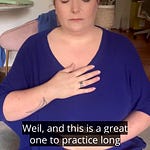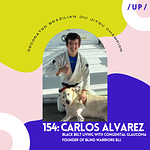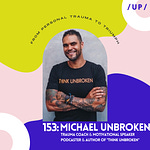Devri Velazquez – or, as she has aptly proclaimed herself, “pretty, sick. chick” – is a content creator, writer, editor, speaker, model, and advocate for chronic illness. She lives with a very rare form of vasculitis called Takayasu’s Arteritis. Diagnosed in 2011, she was told by doctors that she might not live to see 30 – and she turned 30 last month! Not only has she defied the odds with her physical health, but her mental health has played a big role in her ongoing wellness and healing. Since diagnosis, she has worked tirelessly to advocate for awareness of this rare disease, connecting with individuals all over the world living with similar conditions. She sat down with Lauren to talk about what motivates her, how she approaches her mindset, and why hard boundaries in her relationships have kept her in good stead. We also touch on gender, ethnicity, and sexual identity as they apply to her medical experience.
Tune in as Devri shares…
- that she was diagnosed during in her last semester of her undergrad degree
- that her early symptoms included brief vision loss, rapid weight loss, jaundice, limp joints, hair loss, and heart palpitations
- that it was confusing to connect the dots of her symptoms – and that at the time she felt like an outsider looking in on her body, disconnected from it entirely
- the revelation that caused her to look into her health more deeply: her mom, a nurse, urged her to go to the hospital
- that it was lucky her parents knew people at the local hospital – because those connections got her a diagnosis within days of checking things out
- that she saw how hard people rallied around her to find an answer
- that she was so sick at diagnosis, she worried she’d die in her sleep
- that she was on bed rest for a full year after diagnosis – which is the antithesis of her personality
- that her partner helped take care of her that first year after diagnosis, which really humbled her
- the importance of asking for help – it’s OK, and it’s necessary
- that as intense as her physical symptoms were, the mental battles that she faced were harder
- some background about Takayasu’s Arteritis
- that the biggest registry for Takayasu’s is in Japan, and consists of about 1,300 patients
- that 1 in 2-3 million people may be at risk for Takayasu’s – so, in essence, she is the only person in Brooklyn living with it
- that she had to get her mind around the idea of death, and come to terms with it
- that she has created discipline around her diet, rest, and relationships
- that when she was diagnosed in her early 20s, medical professionals told her family that the low life expectancy with Takayasu’s meant she had a 40% chance to live 10 more years – and she just turned 30
- that she lives in a constant 8 or 9 on the pain scale, but has learned to accept that level as her 2 or 3
- that she’s learned grace from her experience with chronic pain
- that her pain is focused mainly in her joints, and she occasionally uses a cane as a mobility aid
- that as a freelancer, she is unable to consistently maintain health insurance
- that she takes great inspiration from the world around her
- that she feels more pain when she stands still – which is both a reality and a metaphor for her life
- the role of mindset in her health
- that she would like everyone to have access to healthcare
- that artists and creatives aren’t taken as seriously as others in the healthcare space, and they need to be
- the need for greater compassion in politics and in healthcare
- the burden of her healthcare costs, which make her feel like her chronic illness is a punishment
- her experiences of judgment, harassment, and abuse in the healthcare system as a queer WOC with chronic illness
- how the #MeToo movement has taught her to raise her voice in uncomfortable medical situations
- that she shares her story to remind others they are not alone
- that she experienced her first bout of depression at 13, and has had support from her family since the beginning
- that she utilizes therapy for her mental health, and that she started her own meditation practice at the age of 12














Share this post